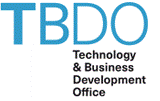Luis Serrano

Research and Interests
Dr. Serrano aims at a quantitative understanding of biological systems to an extent that one is able to predict systemic features with the hope to rational design and modify their behavior. This applies to any system comprising biological components that is more than the mere sum of its components, or, in other words, the addition of the individual components results in systemic properties that could not have been predicted by considering the components individually. By achieving this objective, Serrano aims at new global understanding and treatment of human diseases in which the target will not be a single molecule but a network.
Within this context, the group runs several and distinct projects that range from the large-scale quantitative analyses of Mycoplasma pneumonia and ways to engineer it into a (living) vehicle for the treatment of various human and animal disorders, to the quantitative systems analyses of mammalian signaling with a focus on the Erk and Erb pathways, etc.
Expertise and Capabilities
To fulfil its purpose of modeling biological systems, the Serrano group combines the development of new software and theoretical approximations to understand complex systems, with in vitro experiments to validate their predictions.
The group has developed a number of proprietary software and databases (mostly related to protein engineering) including Tango, Agadir, Smart Cell and the FoldX Suite. Such software are available for online use or licensing, or services can be offered instead.
Particularly relevant and widely used in the field of protein engineering is the software FoldX Suite, providing a fast and quantitative estimation of the importance of the interactions contributing to the stability of proteins and protein complexes.
Another tool developed by the group is REPcembl, a modular, multigene mammalian expression system that allows for simultaneous knock down of and endogenous target and replacement with a mutated/altered version, to study the effects of such mutation/alteration in a context equivalent to that of the endogenous form. The combination of several, discrete and independent “cassettes” into one single vector system reduces the problems related to the number of plasmids, drug selection markers, and physical space available for entry of these vehicles into living cells. Four (4) different inducible TET expression system versions with different properties (v1 to v4) are available for (i) controlled gene expression, and (ii) different dynamic expression ranges to mimic the expression levels of the endogenous target.
Finally, Serrano is main inventor in two ongoing patent applications:
- WO/2012/085891 A2, related to variants of TNF family ligands, which have been mutated at the ligand trimerisation interface, so that they are not capable of assembling into trimers, and either assemble into dimers or remain as monomers. Such ligands bind to the TNF receptor but are unable to activate it, effectively functioning as competitive inhibitors. The concept has been developed using the Receptor Activator of Nuclear Factor Kappa-B Ligand (RANKL) a member of the TNF superfamily that has been identified to affect the immune system and control bone regeneration and remodeling. Therapies that modulate the RANK/RANKL axis are currently available in the market in the form of a monoclonal antibody against RANKL (Prolia®, by Amgen) and the one developed by Serrano’s lab is expected to act synergistically with, or eventually be superior to it.
- EP15157028.0 relates to peptides which, when fused to a polypeptide of interest, drive the efficient secretion of the polypeptide of interest out of bacterial (Mycoplasma) cells. The invention has multiple potential applications, in particular in the area of vaccination and next-generation bacterial-based therapies.

